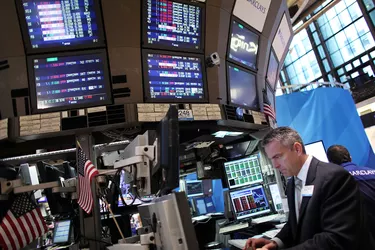
Rice received a lot of attention in 2009 when Wal-Mart began limiting the amount of rice that a shopper could purchase. This action was in response to worldwide shortages that came about due to high fuel prices and adverse weather conditions. This shortage caused prices to spike, earning some knowledgeable investors a lot of money. If you would like to diversify your stock portfolio by investing in rice, there are several ways to do it.
Futures and Options Contracts
Video of the Day
Step 1
Open a brokerage account that will allow you to trade futures, options and stocks (see Resources below for suggestions).
Video of the Day
Step 2
Buy an options or futures contract on rice. The ticker symbol for rice is ZR. You will need a minimum margin of $2,430 for a futures contract and $250 for an options contract.
Step 3
Enter the ticker symbol into the brokerage software and click on "Search." This will bring up a list of rice-related products and their contract dates.
Step 4
Select the month of the contract that you wish to purchase and the price that you wish to buy it at under the "Limit" price. Click on "Buy" or "Submit Order." When the price of the contract is reached, the software will automatically purchase the contract.
Stocks and ETFs
Step 1
Buy a stock or exchange traded fund (ETF). Since rice producers are not publicly traded companies you cannot purchase their stock directly. You can, however, buy the stock of companies related to the production of rice.
Step 2
Buy stock from companies that make pesticides and seed-related products related to rice. You can research these types of companies at MarketWatch.com or Morningstar.com.
Step 3
Buy an exchange traded fund (ETF). These are funds that invest in several different, but related companies for diversification. There are several agricultural ETFs that you can consider. These include the ELEMENTS Rogers International Commodity fund (NYSE: RJA), the iPath DJ AIG Agriculture Fund (NYSE: JJA) and the PowerShares DB Agriculture ETF (NYSE: DBA).
Warning
Never risk more than 2 percent of your capital on an individual trade and always use a stop loss. Make sure to research thoroughly your investments and understand the potential risks as well as the rewards.